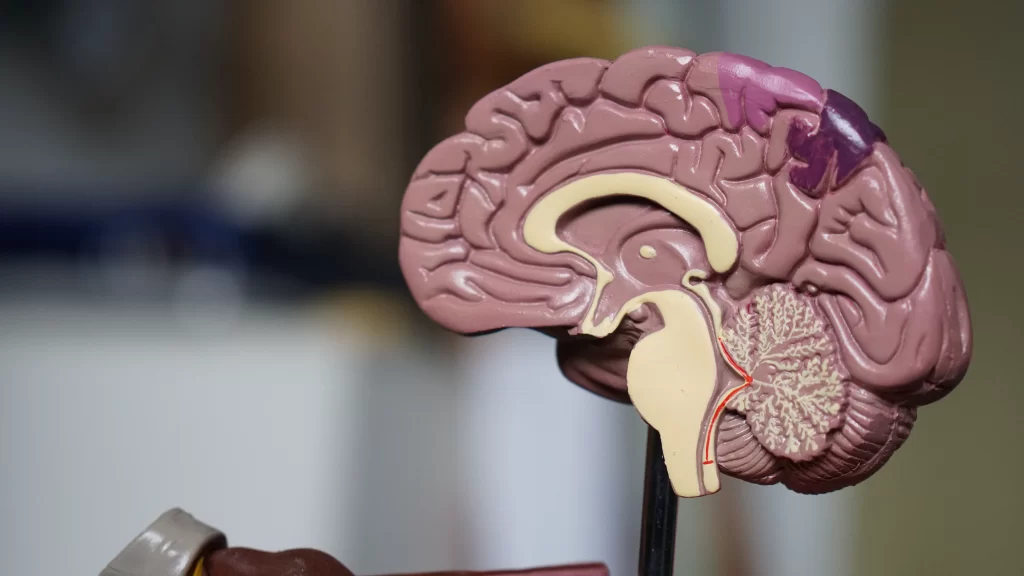Introduction: Overcoming Fear with EMDR Therapy
It was the late 1990s, and a traumatic encounter with a beehive had left me with an intense fear of bees. This phobia was so severe that it dampened joys of picnics and outdoor fairs during the vibrant summer months. At the time, I was already seeing a therapist for other issues, who recommended a relatively new treatment called Eye Movement Desensitization and Reprocessing, or EMDR. Although EMDR was not yet widely recognized as an evidence-based treatment for trauma, phobias, and PTSD, I was open to giving it a try.

The EMDR Experience
During the EMDR sessions, my therapist would perform a series of hand movements in front of my eyes, which was quite different from the traditional talk therapy I was used to. Initially, this method felt almost hypnotic and somewhat unusual. However, the discomfort soon gave way to a surprising ease. The therapy involved identifying a distressing memory linked to bees and pairing it with a negative cognition. This was followed by the introduction of a positive cognition that gradually helped dismantle my fear.
Remarkably, after just a few sessions, my fear of bees completely disappeared. It was nothing short of magical at the time, and looking back 25 years later, the results still astonish me.
My Professional Endorsement of EMDR
Since that personal success, I have expanded my use of EMDR to tackle more complex issues, both as a client and as a therapist. EMDR therapy accesses what is known as the Adaptive Information Processing (AIP) network in the brain. A useful metaphor to understand this is imagining unprocessed traumatic memories as being locked away in a locker. EMDR serves as the key to unlock these memories, allowing for their reprocessing and integration into the broader memory network. This process can alleviate the disturbances caused by unprocessed memories, which often manifest as both physical and mental health issues.
Evidence-Based Recognition and Applications of EMDR
EMDR gained recognition as an evidence-based method for treating trauma in 2009 and has been endorsed by trauma experts like Bessel Van der Kolk, who notes its efficacy in treating trauma, often surpassing other therapeutic methods, though with certain exceptions. It is particularly potent for addressing both single-incident traumas and can even help with some complex (multiple traumas/childhood and adulthood).
EMDR for Sexual Trauma
Specifically, for individuals who have experienced sexual trauma, EMDR has proven to be an effective treatment option. Research, such as the study by Cloitre et al. (2010), indicates significant reductions in PTSD symptoms, depression, and anxiety following EMDR therapy for survivors of sexual assaults among other traumatic events. EMDR helps patients process and integrate traumatic experiences, diminishing the severity of trauma-related emotional and physical responses.
Seeking EMDR Therapy
If you or someone you know has endured sexual trauma or struggles with fears linked to specific traumas, I strongly recommend considering EMDR therapy. It is advisable to connect with a qualified EMDR therapist experienced in dealing with trauma cases. The transformative potential of EMDR is not just about managing symptoms but fundamentally healing from the past, enabling a fuller, more engaged life.
By sharing both my professional and personal experiences with EMDR, I hope to encourage more individuals to explore this effective therapeutic option. Contact me and we can explore if EMDR therapy is right for you: melissamcmanis.com
Melissa McManis, LCSW; Trained in the Somatica Method of Sex and Relationship Therapy and Coaching
Dive Deeper with These Resources:
- What is EMDR? – Learn about EMDR therapy from the EMDR Institute.
- EMDR Therapy – Psychology Today’s guide to EMDR therapy.
- Video: Effective Trauma Treatment with EMDR by Bessel van der Kolk – Insights on trauma treatment and EMDR.
- Cloitre et al. (2010) Study – Research on EMDR’s effectiveness in treating PTSD symptoms.
For more tips on improving intimacy, check out our Sexual Trauma Therapy page.
Sources:
Shapiro, F. (1995). Eye movement desensitization and reprocessing: Basic principles, protocols, and procedures. Guilford Press. This is the original book by Francine Shapiro, the creator of EMDR, that provides an overview of the theory and practice of EMDR.
Lee, C.W., & Cuijpers, P. (2013). A meta-analysis of the contribution of eye movements in processing emotional memories. Journal of Behavior Therapy and Experimental Psychiatry, 44(2), 231-239. This meta-analysis found that eye movements, which are a key component of EMDR, significantly reduce the emotional intensity of traumatic memories.
Hase, M., Schallmayer, S., & Sack, M. (2008). EMDR reprocessing of the addiction memory: Pretreatment, posttreatment, and 1-month follow-up. Journal of EMDR Practice and Research, 2(3), 170-179. This study found that EMDR can be effective in treating addiction, which is often related to unresolved trauma.
van der Kolk, B. A., Spinazzola, J., Blaustein, M. E., Hopper, J. W., Hopper, E. K., Korn, D. L., & Simpson, W. B. (2007). A randomized clinical trial of eye movement desensitization and reprocessing (EMDR), fluoxetine, and pill placebo in the treatment of posttraumatic stress disorder: Treatment effects and long-term maintenance. Journal of Clinical Psychiatry, 68(1), 37-46. This randomized clinical trial found that EMDR was as effective as medication (fluoxetine) in treating PTSD and had longer-lasting effects.
American Psychiatric Association. (2017). Practice Guideline for the Treatment of Patients with Acute Stress Disorder and Posttraumatic Stress Disorder. American Psychiatric Association Publishing. This practice guideline from the American Psychiatric Association recognizes EMDR as an effective treatment for PTSD.


